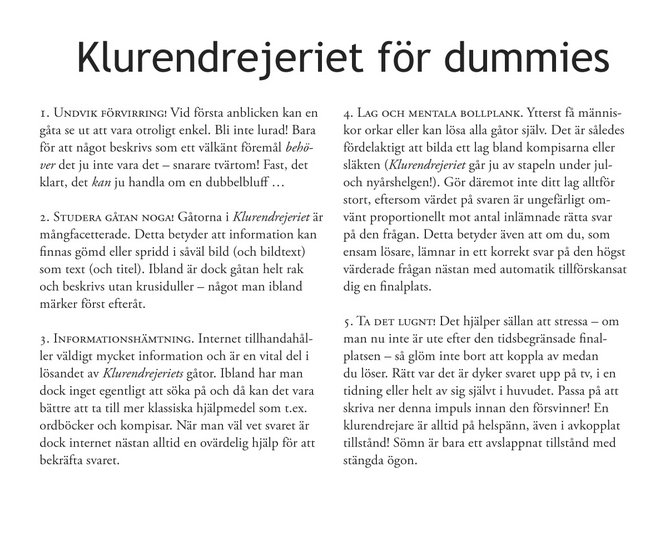
One or two?
Here is the fifth lesson in Swedish for beginners especially for the participants of Klurendrejeriet® mini. We have previously covered the magic number one in Swedish, and this time we are doing it to two too! In modern Swedish, the word primarily used is två [roughly pronounced: twoh]. As always, there are a few exceptions found in standing expressions or archaic ways of expressing some type of dualism (a few of these are listed below, where the two counterpart is in the translated explanation is in italics). There is no grammatical dual (dualis) per se in modern Swedish, but some remnants can still be seen in words like ögon (eyes), öron (eyes), and pairing words like båda and bägge (both meaning both).
de unga tu (the young couple)
ett, tu, tre! (one, two, three! [expressing a sudden event])
tvenne folkvisor (two folksongs)
tvegifte (bigamy)
tveeggad (double-edged [nowadays often meaning "having advantages and disadvantages"])






No comments:
Post a Comment